Notes
The Trump “Obama Muslim” Moment the Media Totally Missed
“We have a problem in this country. It’s called Muslims,” the man in the “Trump” t-shirt declared, his voice echoing through the New Hampshire town hall.
Then came the shocking accusations: “You know our current president is one. You know he’s not even an American.”
Trump, rather than correcting these blatant falsehoods, responded with a chuckle: “We need this question. This is the first question.
“The man continued, undeterred: “Anyway, we have training camps growing where they want to kill us. That’s my question: When can we get rid of them?”
Instead of denouncing this baseless claim, Trump replied vaguely: “We’re going to be looking at a lot of different things. You know, a lot of people are saying that and a lot of people are saying that bad things are happening.”
If you’ve been following the presidential race, you’re already familiar with the shame of the moment, at least how CNN portrayed it.
At a campaign event in New Hampshire, Donald Trump hosted an open Q&A session where a participant made inflammatory remarks. The man falsely claimed that President Obama was a Muslim and not an American and alleged the existence of Muslim “training camps” in the U.S. Rather than correcting these falsehoods, Trump did not challenge the man’s assertions. This failure to refute such baseless claims drew criticism from the media, especially when compared to John McCain’s response in a similar situation in 2008. By not addressing these inaccuracies, Trump tacitly validated them, further fueling conspiracy theories surrounding Obama’s religion and citizenship.
Shame on Trump, yes, and on the compliant assembly, too — right?
Here’s my problem, though. In implicating Trump as a bigot and, by association, the audience as cohorts or sheep, the media, especially the visual media, thoroughly missed one of the most curious and unscripted moments of this dispiriting campaign.
They missed a reaction entirely contradictory to conventional wisdom and the perception that the hearts and minds of those drawn to the billionaire lightning rod would be fixed and static. These are those white people whose anxieties and fears are rigidly held in check by anger and prejudice, right?
Is it possible, though, that voters, even the most scared and angry ones, are actually more flexible in their thinking but just all-too suggestible?
Let’s get to the screenshots.
What is plainly visible in the first one, upon the questioner calling Obama a Muslim, is outright shock and recoil in response to the slur by these died-in-the-wool reactionaries.
In the next millisecond, the instinctive and immediate behavior of the crowd is to check in with Trump for his response.
It’s at that point that the bodies relax — after Trump has not only morally validated but endorsed the hateful remark.
But here’s where my emphasis on the media framing comes in. Broadly authorized by mockery, irony, or just business-as-usual, Trump’s impact and effect, at least visually, is mainly falling into a dead zone. The tone of the visual coverage — tone in a picture being analogous to “point of view” — is to treat Trump as a spectacle, as cultural and political entertainment, as just a guy getting away with something. So that, when those moments come, as I imagine they do every day, when the truth rears it’s ugly head (or cranes a dozen not-completely-brainwashed-ones), all the cameras can see is what they’re already looking for.
Where the commons suffer, and the media fails us—Trump and his followers are simply the examples of the day—is in boiling the political and cultural world down to clichéd storylines and caricatures. So, let me illustrate how this fails us in a larger sense. In contrast to the more dynamic and three-dimensional quality of the reactions caught in that screenshot, the twenty-one photo Getty edit (published here at Zimbo) largely reinforces the caricatures, framing the attendees as wackos and eccentrics.
A supporter of Republican Presidential candidate Donald Trump stares down a man who shouted Bible verses during a town hall event at Rochester Recreational Arena September 17, 2015 in Rochester, New Hampshire. Trump spent the day campaigning in New Hampshire following the second Republican presidential debate. (Sept. 16, 2015 – Source: Darren McCollester/Getty Images North America)
A man shouts during Republican Presidential candidate Donald Trump’s town hall event at Rochester Recreational Arena September 17, 2015 in Rochester, New Hampshire. Trump spent the day campaigning in New Hampshire following the second Republican presidential debate. (Sept. 16, 2015 – Source: Darren McCollester/Getty Images)
Two men argue while Republican Presidential candidate Donald Trump speaks during a town hall event at Rochester Recreational Arena September 17, 2015 in Rochester, New Hampshire. Trump spent the day campaigning in New Hampshire following the second Republican presidential debate. (Sept. 16, 2015 – Source: Darren McCollester/Getty Images.)
Like the TIME cover of the Trump faux-statesman posing in his shambles of an office with an American eagle, Trump, the faux-founding father in a powdered wig, or the amusing New York Times Magazine cover depicting Trump as a balloon, the media is aiding and abetting its show dog. Or, to the detriment of those people in this audience, concerned and suggestible as they are, perhaps the better analogy for the media’s framing of Trump is “the Pied Piper.”
Perhaps the most concerning factor here, however, is the discrepancy between the reaction of shock when Trump normalized the “Obama as Muslim” slander and the sense we were left with that the audience never even blinked.
(screenshots: CNN. photos: Darren McCollester/Getty Images.)
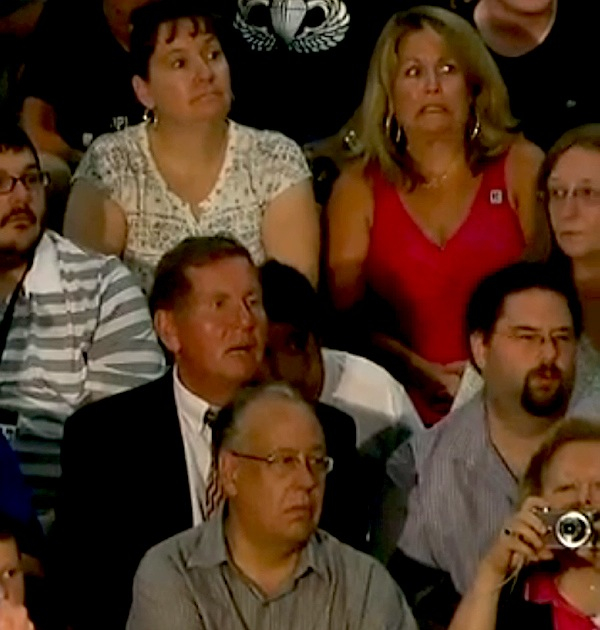
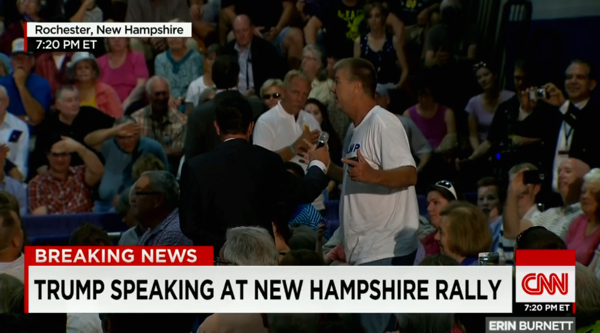
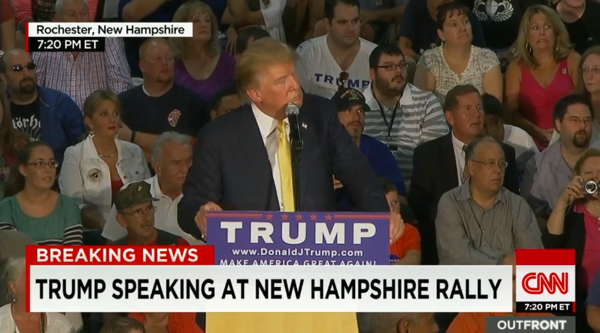
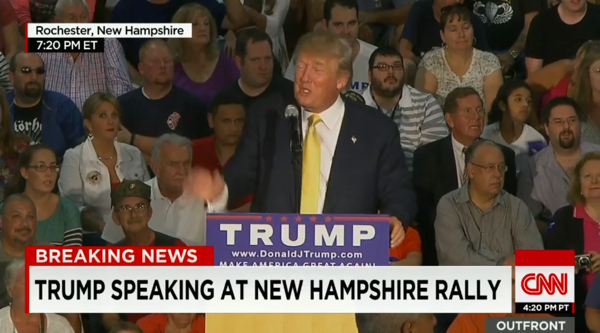
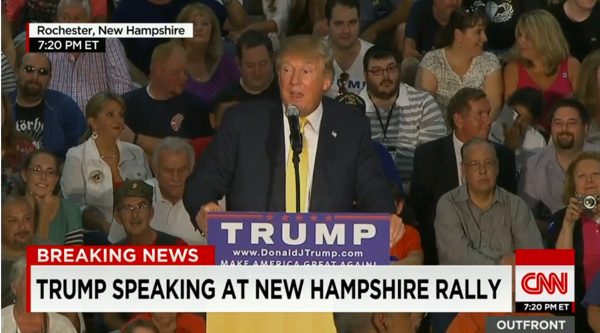
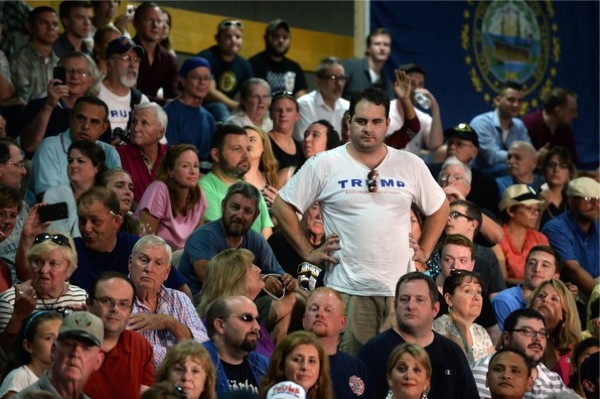
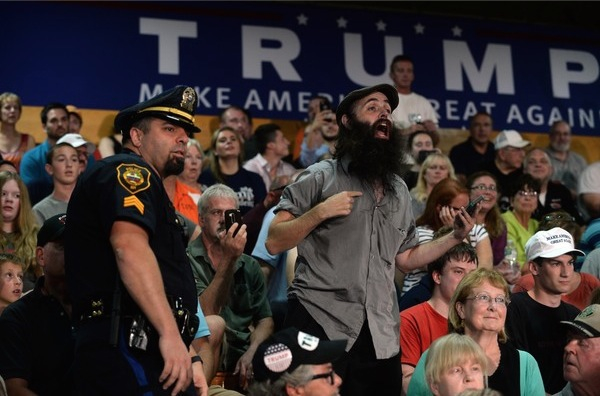
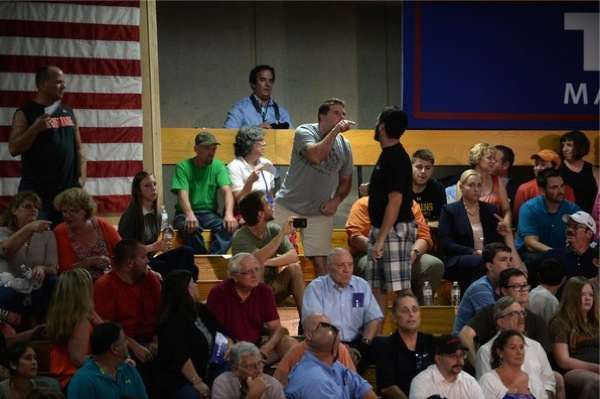
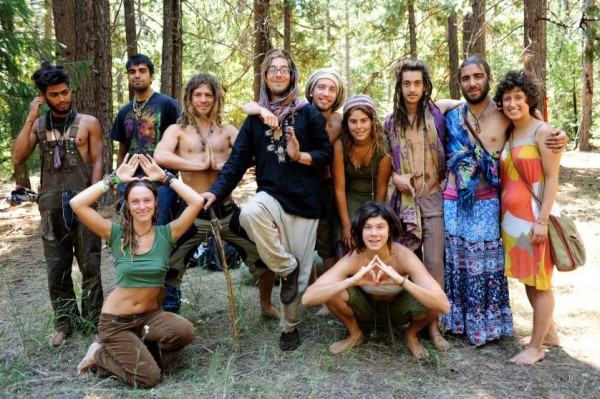
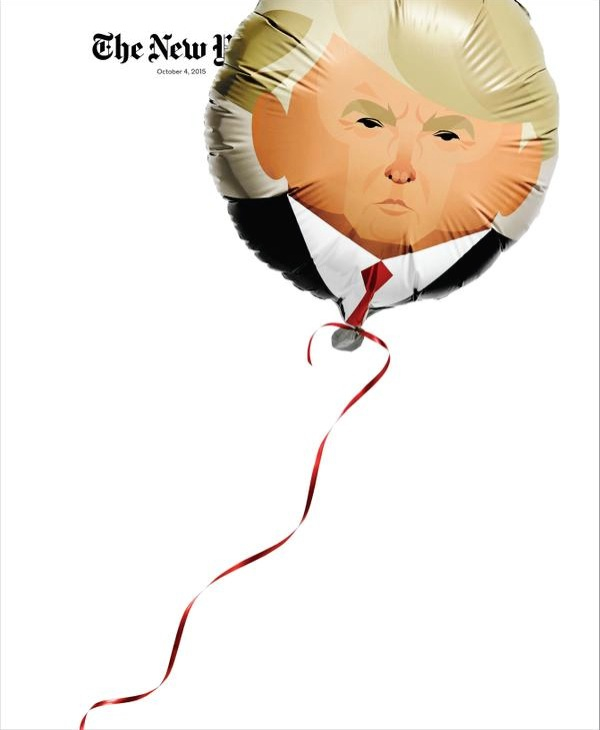
Reactions
Comments Powered by Disqus